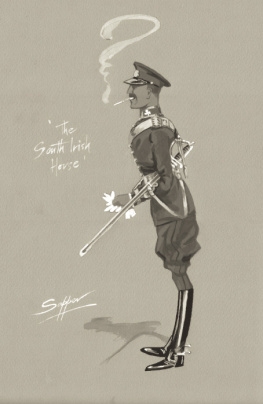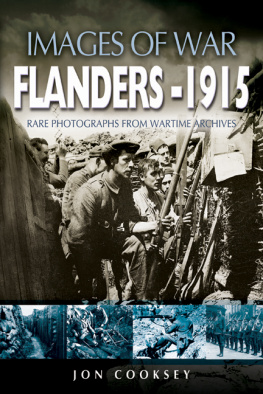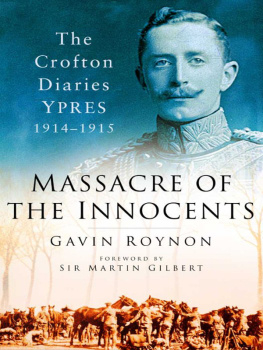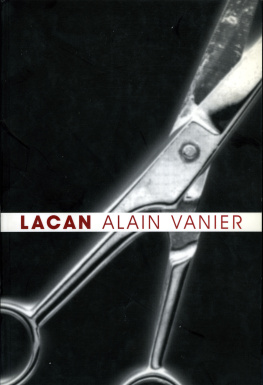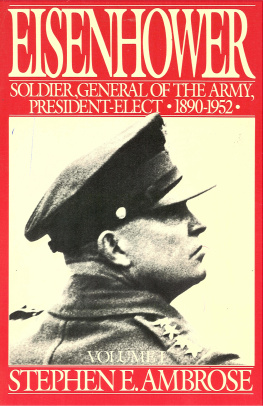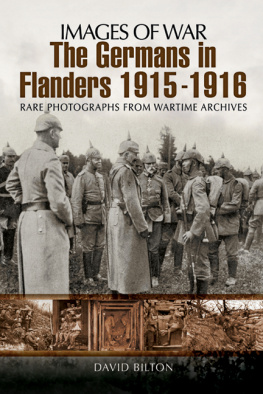GEORGES VANIER:
SOLDIER
GEORGES VANIER: SOLDIER
THE WARTIME LETTERS AND DIARIES
19151919
EDITED BY
DEBORAH COWLEY

Copyright Deborah Cowley, 2000
All rights reserved. No part of this publication may be reproduced, stored in a retrieval system, or transmitted in any form or by any means, electronic, mechanical, photocopying, recording, or otherwise (except for brief passages for purposes of review) without the prior permission of Dundurn Press. Permission to photocopy should be requested from the Canadian Copyright Licensing Agency.
Editor: Marc Ct
Copy Editor: Barry Jowett
Design: Jennifer Scott
Printer: Transcontinental
Canadian Cataloguing in Publication Data
Vanier, Georges P. (Georges Philias), 1888-1967
Georges Vanier, soldier: the wartime letters and diaries, 1915-1919
ISBN 1-55002-343-8
1. Vanier, Georges P. (Georges Philias), 1888-1967Correspondence. 2. Vanier, Georges P. (Georges Philias), 1888-1967Diaries. 3. World war, 19141918Personal narratives, Canadian. 4. SoldiersCanadaCorrespondence. 5. SoldiersCanadaDiaries. I. Cowley, Deborah. II. Title.
D640.V35 2000 | 940.48171 | C00-931844-5 |
1 2 3 4 5 04 03 02 01 00

We acknowledge the support of the Canada Council for the Arts and the Ontario Arts Council for our publishing program. We also acknowledge the financial support of the Government of Canada through the Book Publishing Industry Development Program, The Association for the Export of Canadian Books, and the Government of Ontario through the Ontario Book Publishers Tax Credit program.
Care has been taken to trace the ownership of copyright material used in this book. The author and the publisher welcome any information enabling them to rectify any references or credit in subsequent editions.
J. Kirk Howard, President
Printed and bound in Canada.
Printed on recycled paper.
www.dundurn.com
Dundurn Press
8 Market Street
Suite 200
Toronto, Ontario, Canada
M5E 1M6
Dundurn Press
73 Lime Walk
Headington, Oxford,
England
OX3 7AD
Dundurn Press
2250 Military Road
Tonawanda NY
U.S.A. 14150
It is a privilege to be of this age when, instead of mediocre colourless lives, we can forget the dollars and the soil and think of principles and the stars. We have been looking at the ground so long that we have forgotten that the stars still shine.
Georges Vanier to his mother,
20 May 1915

Public Archives of Canada PA 166146
This drawing of Georges Vanier by the Belgian artist Alfred Bastien is one of many drawings and paintings Bastien made in July/August 1918 while he was attached as a war artist to the 22nd Battalion. On the front, he has written a dedication to Vanier: A Major G. Vanier, Souvenir de mon joyeux sjour en France, Alfred Bastien. (In memory of my happy stay in France, Alfred Bastien.) On the outside border, he has added: Ce dessin a t fait daprs natureen face des boches Monchy-le-Preuxprs dArras, dans la tranche de 1 re ligne. (This drawing was made from lifefacing the Boches at Monchy-le-Preuxnear Arras, in one of the front line trenches.)
CONTENTS
EDITORS NOTES
It was almost two years ago that Thrse Vanier, the only daughter and eldest of Georges Vaniers five children, asked me to look at some of her fathers wartime letters. He had written regularly to his family from the trenches during World War I and kept a diary for most of that period. It was Thrses feeling that this material might reveal a side of her father that few people knew.
My first hesitation was that I am neither a historian nor a military expert. Nonetheless, I quickly sought out those who were versed in both disciplines to help steer me through the minutiae of military lore. My second concern was that, at first glance, many of Vaniers letters did not appear to reveal much of what the writer really felt. They seemed to mask the day-to-day realities of war and often sounded too up-beat to be true. But the more I sifted through the voluminous materialthere were over three hundred letters as well as meticulously detailed diary notesthe more I realized that they did in fact offer insights into the man. They also, of course, represented important records of a period. So for almost two years, I immersed myself in the First World War and followed the daily wartime exploits of Georges Vanier, the soldier.
The letters and diaries I have selected appear almost exactly as they do in the originals. I have taken a few small liberties, correcting occasional spelling mistakes or dates or place names. I have also removed repetitious material (indicated by square brackets and dots) to help move the story along. Where necessary, I have added brief comments (shown in italics within square brackets). When I felt more complete explanations were called for, I have provided endnotes.
The letters Vanier wrote to his mother were all written in English, and those to his father in French. Where the original letter was written in French, I have shown the opening salutation in French but continued with an English translation. Most of his diaries were written in French so these appear in translation.
I have chosen to spell Georges Vaniers first name in the French way, with an s. He generally signed his wartime letters without an s but for the latter part of his life, he tended to use the French version. A reporter once asked him which spelling he preferred. I have no preference, he replied. I like to leave a certain latitude.
One small note: throughout the war, Vanier, like most of his fellow soldiers, made frequent use of the words Hun and Boche when referring to the Germans. This was a slang usage, that was freely used in wartime.
Finally, if any errors have crept into the text, I offer my apologies and take full responsibility.

Directorate of History and Heritage/Department of National Defence
PROLOGUE
THE CALL OF WAR
Georges Vanier was a military man to the depths of his soul. He was intensely proud of his regiment, the Royal 22nd, and he often described the four years he spent on the battlefields of Europe as the most rewarding of his life. He was fighting for a causethe defence of his beloved Franceand even as the war dragged on into its fourth year, he never appeared to doubt the legitimacy of his mission. He was a loyal and dedicated soldier.
Vaniers strong allegiance to his regiment and to the military continued long past the silencing of the guns in November 1918. In fact, it remained with him throughout his life. It is not surprising, therefore, that at his investiture as governor-general on September 15, 1959and at most other ceremonial occasionshe chose to wear full military uniform, sword slung at his side and a row of medals strung proudly across his chest. At his state funeral in March 1967, he was mourned in true military style: a simple walnut coffin draped with the Canadian flag, his military cap and sword placed on top, travelled on a gun carriage through the snow-bound streets of Ottawa escorted by over two thousand members of the armed forces. As they slowly marched to the beat of muffled drums, air force jets flew by overhead and a booming seventy-eight-gun saluteone for each year of Georges Vaniers lifecrackled through the frosty air. It was a fitting tribute to a great soldier.





